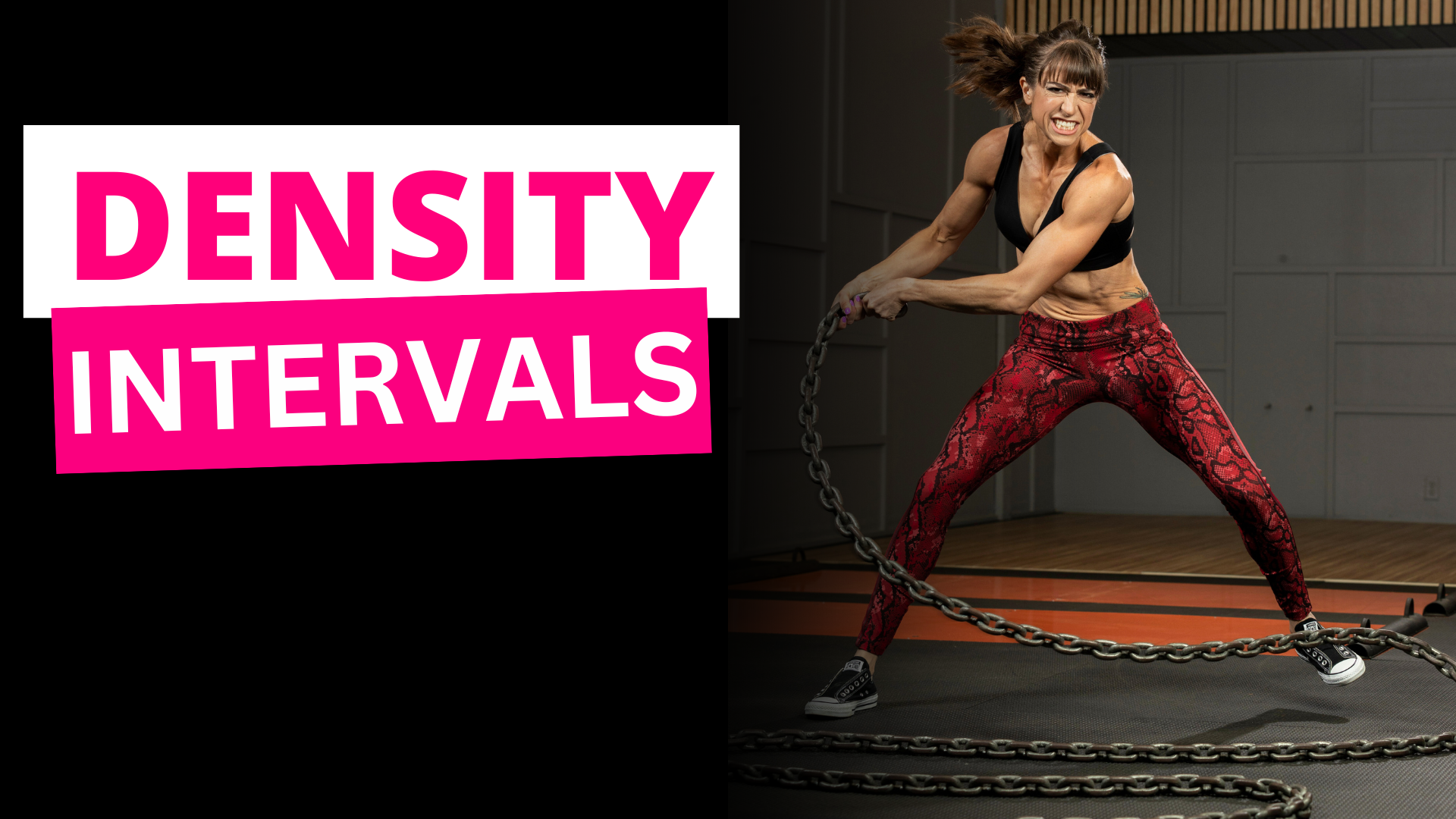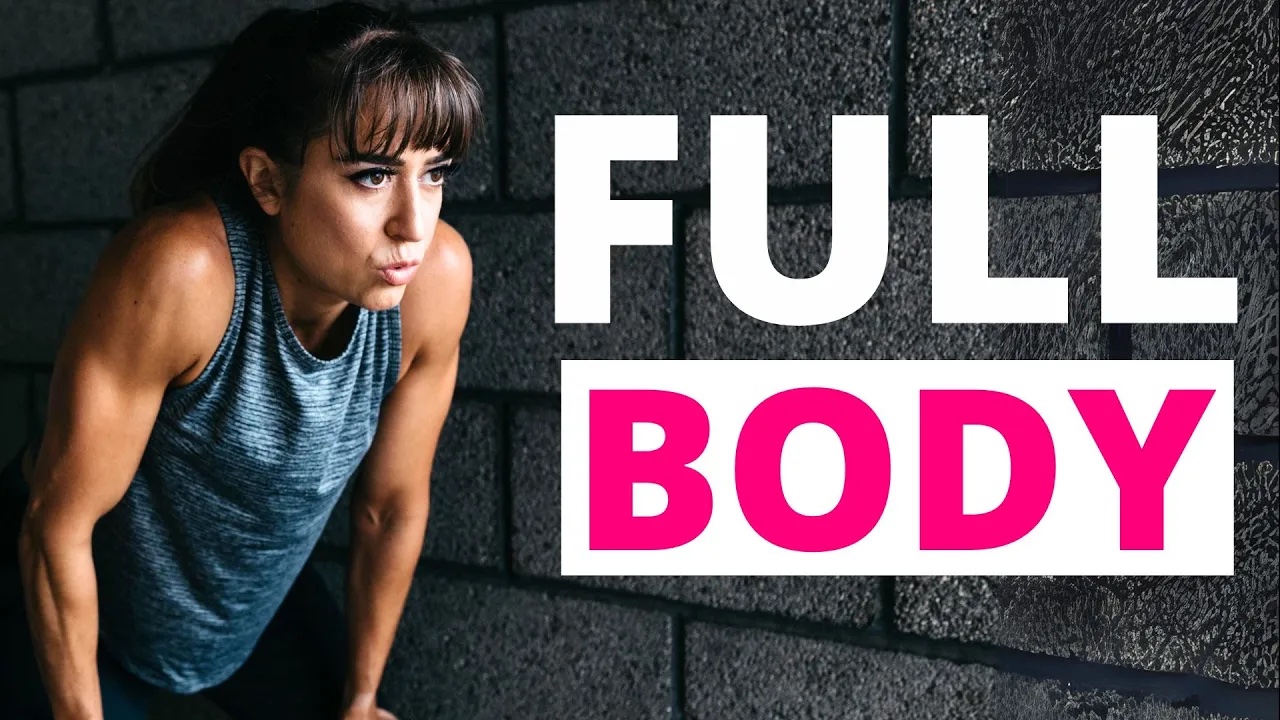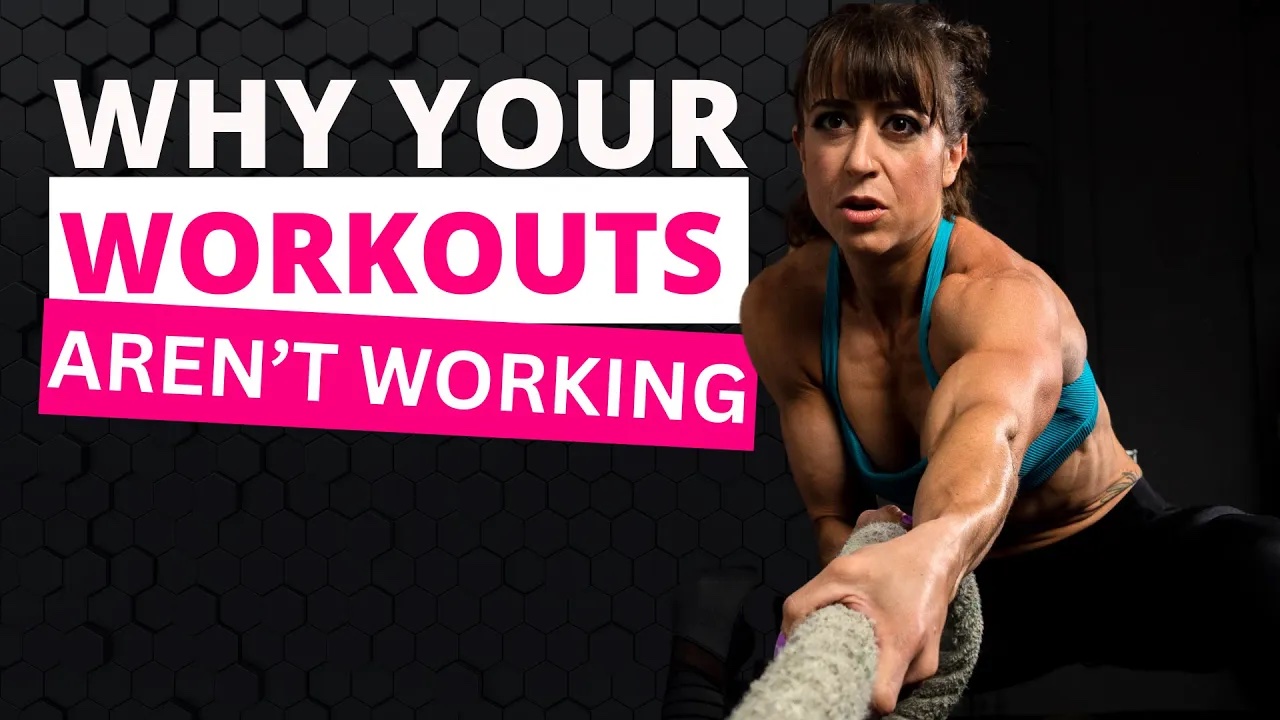
15 Years Of NO BS Fitness Advice (In Under 15 Minutes)
I’m going to give it to you straight. 15 tips from about 15 years in the industry in under 15 minutes. Good thing I talk fast.
Tips that not only worked for me but I’ve seen work for people around the world to help YOU rock those results no matter your age.
So to not waste any time, Tip #1 and one of the most important keys to results…
Don’t Quit.
We most often don’t see results build because we never stick with anything long enough.
We give up at the first FEELING that something isn’t working…
That results aren’t happening fast enough.
And we jump to something new.
This constant jumping from thing to thing never lets us get GOOD at anything or be consistent enough with it for true changes to snowball.
Results are built off of those basic, boring habits repeated daily over not only weeks, but months and years.
But not quitting and trusting the process is hard, which is why Tip #2 is…
What gets measured gets managed.

If you want to bake a cookie and make sure it turns out, you follow a recipe.
This clear plan with everything tracked and measured, helps you guarantee a result.
If you randomly just throw things in a bowl, you won’t know why the cookies didn’t turn out or why they were the best gooey deliciousness ever.
Same principle applies to our health and fitness goals.
If we have that clear recipe and measure out everything, we can help ourselves make sure we’re working toward a focused outcome and more easily ADJUST if something goes wrong.
When we have that clear picture of what we’re doing, we don’t have to feel frustrated or like we are guessing at what works.
We also give ourselves true DATA off of which to make changes so we can trust the process more and not let feelings that sabotage us make us want to quit.
But even embracing tracking, whether it is your food or workouts or ideally both, is a hard thing at times for us to accept.
Which is why Tip #3 isn’t just to track but to jump into the changes you least want to make as soon as you can!
Yup. The changes you least want to make are the ones you probably need to make the most.
One of the most important things I harp on is increasing protein.
Guess what change most of us don’t want to make, researching even reasons why we shouldn’t increase it?
But also guess what changewe most often INSTANTLY see progress from and wonder why we didn’t make it sooner?
You guessed it…increasing protein.
Change requires change.
And the changes we least want to make are the ones that are often the hardest, most uncomfortable or furthest from our comfort zone.
But they are also often what is needed to reach a goal we haven’t achieved before and bust us out of the yo-yo dieting cycle.
So if you’ve been fighting a change, pause, ask yourself why, and then embrace an experiment where you track and see the true outcome!
It may surprise you!
And while embracing discomfort is part of achieving results, we can also sabotage ourselves with the “No pain, no gain” mindset!
Which is why Tip #4 is to ditch the all or nothing, work harder, no pain, no gain attitude.
This attitude keeps us stuck expecting perfection of ourselves, doing more and more until…well…
We ultimately run out of willpower, get injured and fall back into old habits.
We’re human and flawesome.
And when we make changes too hard on ourselves, we’re often just making our excuses grow too.
It’s Newton’s Third Law of Motion that says, “For every action, there is an equal and opposite reaction.”
Keep trying to do more, and you’re going to get a push back against the changes equally as strong.
And the harder we work, the more we do, the more we EXPECT an outcome…when in reality we can’t out exercise or out diet time.
So ultimately we just make ourselves give up in frustration.
Instead we need to focus on small changes that build and that make change seem DOABLE.
Which is actually why Tip #5 is to stop the eat clean pressure.
There is no official definition of clean eating and trust me, no one agrees.
Vegans and Carnivores have vastly different opinions.
And trying to hit someone else’s arbitrary standards of clean can make you feel like you can’t even eat air.
It can make us feel guilty for enjoying food and even make us feel like it’s impossible to even make a change that will pay off.
But we can and should include foods we simply LOVE.
We just need to strike an 80/20 balance.
80% of the time focus on those whole natural foods. 20% include just foods you love with NO guilt.
This will allow you to create a sustainable lifestyle and truly build consistent habit changes that do snowball over leaving you feeling restricted and deprived so you ultimately fall off any plan you start.
And with embracing your balance, don’t just include foods you love, truly PLAN around them, even planning them in first.
Tip #6 is the secret that led to me ultimately finally achieving the body recomp I wanted.
Planning in the foods I wanted first and focusing on nutrition by addition.
Often the things we love most are the things we cut out first. They are the things that don’t make that “eat clean” list.
They are also the things we add back in as soon as we can, which lead to us ending up back where we started.
Basically we’re repeating a cycle of restriction we can never maintain.
And you can’t do one thing to reach your goal then go back to what you were doing before and expect to maintain your results.
Plus the second you tell yourself you can’t have something, you want it even more!
Instead, plan in the dessert you want, that snack you love, FIRST to your day and work your other meals around it.
Start by making small changes to your diet, adding in more veggies or protein or something you know is beneficial.
This focus on small changes that feel easy often is just what we need to lower our defenses against more changes and see the momentum build.
However, in including foods you love, this doesn’t mean you can eat whatever you want, whenever you want in any quantity you want.
Which is why Tip #7 is to recognize your trigger foods.
No foods have to be off limits. But there are foods we will CHOOSE to include or not include.
We need to recognize those foods we can’t consume in moderation that only lead to us falling back into old patterns.
I know I can have just one peanut butter protein ball, but I know I can’t have just one Reese’s peanut butter cup.
I own this fact and include the protein ball on a regular basis but the peanut butter cup only when I’m ok with having more than 1..or like 10.
And if I do have peanut butter cups around and don’t want to eat them, I put them in the freezer.
For me, this shifts my mindset to be ok with waiting to have more.
While this is odd because technically they taste even more delicious frozen, this freezing of them helps me feel like they’ll be there when I want them in the future.
It’s the shift in environment and mindset.
For you this shift may come from not having the food in the house, or putting it into single serving bags so you can only easily eat one serving or even hiding it on a higher shelf.
The key is I recognize the foods I can work in and those I can’t to then determine a balance and even environment right for me and my goals at this time.
So CHOOSE to include foods you love but also understand the foods that may not fit your goals right now and find ways to address that!
The more we own who we are and what has and hasn’t worked for us in the past with our diet and workouts, the more we can meet ourselves where we are at and create the perfect plan for ourselves right now to rock those results.
That’s why Tip #8 is to assess and address your schedule shifts.
I most often talk about assessing your schedule when it comes to designing your workout, but you want to also assess your schedule to make dietary changes as well.
Not only in terms of determining how you meal prep and the meal timing best for you but also in how you handle WEEKEND EATING!
Too often we don’t see results and think, “But I was good all week!”
It’s that weekend eating that gets us. It changes our macros for the week and can easily throw us out of our deficit.
Some of us even recognize how hard it is to eat well over the weekend, but then we never really address that fact.
We force weekday habits on weekends that just aren’t the same.
Instead we need to own that often habits and schedules DO change over Friday, Saturday and Sunday and we need to PLAN for that.
That we do enjoy happy hour or are at home more lazing on the couch!
So instead of a strict macro ratio, maybe we just set a calorie cap and protein minimum.
Maybe we plan in restaurant dishes or cocktails to hold ourselves accountable but have a bit more food freedom on the weekend with boundaries.
The key is assessing why the same habits don’t work over the weekend and finding ways to address the changes in schedule and even routines to work with them instead of trying to willpower your way against them!
So many of these tips are about shifting the mindsets controlling our actions.
And Tip #9 addresses a hard mindset to often change but one that is so key for us seeing better results from our training….
We need to stop seeking to be sore.
Soreness is not an indicator you worked hard enough or you’re going to see better muscle gains.
I know it can feel satisfying and some of us sickly like it….
But honestly, it is really often a sign we don’t have a clear program in place that we’re strategically progressing or that our recovery and fueling isn’t ideal.
And constantly seeking to be sore may be why we feel like we’re working really hard yet not seeing progress.
Instead everything we include in our workouts should be designed with a purpose and repeated to progress.
But just because a clear progression or weekly schedule we repeat is key, doesn’t mean we shouldn’t include diversity.
Actually diversity of movement is ESSENTIAL and that’s why it is Tip #10….
Exercise diversity helps us see better results faster.
Diversity of movements done over the weekly schedule can help us create progression through the same but different and target different aspects of muscles to different extents.
We can diversify the moves we use through different types of resistances…
Through adding instability, whether an unstable surface or even by making a move more unilateral, such as an 80/20 deadlift or single leg deadlift over a bilateral one.
Or even through slightly different postures, positions or ranges of motion.
We also have to remember that different muscles in a muscle group may have different joints they impact and control movement of and therefore will be worked by different joint actions.
For example, if you want to make sure you hit your entire hamstring muscle group, you can’t just include a deadlift, which is a hip hinge.
You also need to include a knee flexion movement like a lying leg curl.
So over the weekly schedule you create, don’t just reuse the same moves. Think about including a diversity to target the same muscles in different ways!
And guess what? Some of these moves you may not like and they may feel awkward. GOOD!
Tip #11 is to do awkward moves you don’t like.
Those moves we don’t like, that feel awkward, are often also moves that address our weak links.
They often improve our balance, stability and our mind-body connection so we ultimately get stronger, can run faster and see better muscle gains.
They are the moves that test our coordination. That make us check our egos with loads.
They keep us young and able to react quickly in every day life while recruiting the correct muscles efficiently in the right order to perform those lifts we may want to beast mode out.
So stop skipping them! They truly are the key to being functionally stronger and often even lifting more with our big heavy lifts.
And not only should you stop skipping these awkward moves, you need to stop skipping your warm up.
Yup Tip #12 is the oh so unsexy tip of – Don’t skip your warm up.
Feel like you’re getting older and just have to accept aches and pains?
You don’t. You just have to stop trying to get away with skipping your prehab work and warm up.
Honestly, this is something we shouldn’t have tried to get away with skipping in the first place and the fact that we did is why more aches and pains add up as we get older.
But we can change that by including a proper warm up now.
A proper warm up makes sure our muscles and joints are ready to work through a full range of motion from the first rep we do with weights.
Our warm up isn’t us wasting time before we get to the good stuff. It is what helps us get results from all the hard work we put in.
If you want to lift more, run faster, cycle further, a proper warm up with foam rolling, stretching and activation is what will help you do just that.
And I know this sucks to hear…I know a lot of what I’ve mentioned goes against some of what you’ve done in the past, but…
You can’t expect to see a new and better result doing what you’ve always done.
That’s why Tip #13 is to embrace being uncomfortable.
Stop fearing something different.
That different thing you’re resisting is probably what you need to get to a new goal.
Because if what you’ve always done worked, you’d have achieved results already.
But we have to step outside our comfort zone and risk being bad at something to learn and grow.
Don’t hold yourself back sticking with what you just feel comfortable with. Build off of that.
Now that being said, you also have to recognize that the more changes you make at once, the more of a cost you’ll feel before the reward.
That’s why I like clients to embrace being uncomfortable but also avoid the all or nothing attitude.
It’s why Tip #14 is to evolve YOUR lifestyle.
Meet yourself where you’re at to build small changes off of that and slowly push your comfort zone.
Because one size doesn’t fit all and there is no perfect plan.
Even what used to work for us will change as WE are constantly changing.
Your lifestyle, body and needs are not the same now as they were years ago.
Not to mention even our schedule shifts over the year as well as our priorities, impacting the habits that are actually realistic for us now.
That’s why we always need to assess where we are currently first to move forward.
When you set that GPS to get you to a new location, you don’t just enter your destination…
You enter your current location. We need that same starting point to map out our roadmap to results.
Which brings me to the boring but essential 15th tip…Plan ahead.
We wouldn’t just get in a car and drive around aimlessly hoping to get to our destination, yet that’s what we so often do with our fitness goals.
We say what we want then just start doing random moves and diets.
Without a plan, we have no direction.
We have no process we can trust.
And we don’t know what is and isn’t working.
So ultimately we get no where.
Failing to plan is planning to fail…cliche and oh so true.
Don’t repeat the same mistakes. Use these tips and plan our your program to achieve your goals. Which 1 tip will you focus on first?
Ready to build your leanest, strongest body EVER no matter your age?
Learn more about my 1:1 Online Coaching!
–> Learn More







